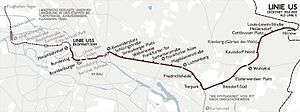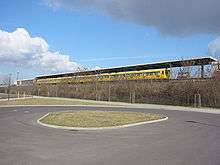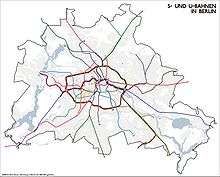U5 (Berlin U-Bahn)
 | ||||||||||||||||||||||||||||||||||||||||||||||||||||||||||||||||||||||||||||||||||||||||||||||||||||||||||||||||||||||||||||||||||||||||||||||||||||||||||||||||||||||||||||||||||||||||||||||||||||||||||||||||||||||||||||||||||||||||||||||||||||||||||||||||||||||||||||||||||||||||||||||||||||||||||||||||||||||||||||||||||||||||||||||||||||||||||||||||||||||||||||||||||||||||||||||||||||||||||||||||||||||||||||||||||||||||||||||||||||||||||||||||||||||||||||||||||||||||||||||||||||||||||||||||||||||||||||||||||||||||||||||||||||||||||||||||||||||||||||||||||||||||||||||||||||||||||||||||||||||||||||||||||||||||||||||||||||||
| Overview | ||||||||||||||||||||||||||||||||||||||||||||||||||||||||||||||||||||||||||||||||||||||||||||||||||||||||||||||||||||||||||||||||||||||||||||||||||||||||||||||||||||||||||||||||||||||||||||||||||||||||||||||||||||||||||||||||||||||||||||||||||||||||||||||||||||||||||||||||||||||||||||||||||||||||||||||||||||||||||||||||||||||||||||||||||||||||||||||||||||||||||||||||||||||||||||||||||||||||||||||||||||||||||||||||||||||||||||||||||||||||||||||||||||||||||||||||||||||||||||||||||||||||||||||||||||||||||||||||||||||||||||||||||||||||||||||||||||||||||||||||||||||||||||||||||||||||||||||||||||||||||||||||||||||||||||||||||||||
| Type | Rapid transit | |||||||||||||||||||||||||||||||||||||||||||||||||||||||||||||||||||||||||||||||||||||||||||||||||||||||||||||||||||||||||||||||||||||||||||||||||||||||||||||||||||||||||||||||||||||||||||||||||||||||||||||||||||||||||||||||||||||||||||||||||||||||||||||||||||||||||||||||||||||||||||||||||||||||||||||||||||||||||||||||||||||||||||||||||||||||||||||||||||||||||||||||||||||||||||||||||||||||||||||||||||||||||||||||||||||||||||||||||||||||||||||||||||||||||||||||||||||||||||||||||||||||||||||||||||||||||||||||||||||||||||||||||||||||||||||||||||||||||||||||||||||||||||||||||||||||||||||||||||||||||||||||||||||||||||||||||||||
| System | Berlin U-Bahn | |||||||||||||||||||||||||||||||||||||||||||||||||||||||||||||||||||||||||||||||||||||||||||||||||||||||||||||||||||||||||||||||||||||||||||||||||||||||||||||||||||||||||||||||||||||||||||||||||||||||||||||||||||||||||||||||||||||||||||||||||||||||||||||||||||||||||||||||||||||||||||||||||||||||||||||||||||||||||||||||||||||||||||||||||||||||||||||||||||||||||||||||||||||||||||||||||||||||||||||||||||||||||||||||||||||||||||||||||||||||||||||||||||||||||||||||||||||||||||||||||||||||||||||||||||||||||||||||||||||||||||||||||||||||||||||||||||||||||||||||||||||||||||||||||||||||||||||||||||||||||||||||||||||||||||||||||||||
| Locale | Berlin | |||||||||||||||||||||||||||||||||||||||||||||||||||||||||||||||||||||||||||||||||||||||||||||||||||||||||||||||||||||||||||||||||||||||||||||||||||||||||||||||||||||||||||||||||||||||||||||||||||||||||||||||||||||||||||||||||||||||||||||||||||||||||||||||||||||||||||||||||||||||||||||||||||||||||||||||||||||||||||||||||||||||||||||||||||||||||||||||||||||||||||||||||||||||||||||||||||||||||||||||||||||||||||||||||||||||||||||||||||||||||||||||||||||||||||||||||||||||||||||||||||||||||||||||||||||||||||||||||||||||||||||||||||||||||||||||||||||||||||||||||||||||||||||||||||||||||||||||||||||||||||||||||||||||||||||||||||||
| Stations |
20 (current) 33 (future) | |||||||||||||||||||||||||||||||||||||||||||||||||||||||||||||||||||||||||||||||||||||||||||||||||||||||||||||||||||||||||||||||||||||||||||||||||||||||||||||||||||||||||||||||||||||||||||||||||||||||||||||||||||||||||||||||||||||||||||||||||||||||||||||||||||||||||||||||||||||||||||||||||||||||||||||||||||||||||||||||||||||||||||||||||||||||||||||||||||||||||||||||||||||||||||||||||||||||||||||||||||||||||||||||||||||||||||||||||||||||||||||||||||||||||||||||||||||||||||||||||||||||||||||||||||||||||||||||||||||||||||||||||||||||||||||||||||||||||||||||||||||||||||||||||||||||||||||||||||||||||||||||||||||||||||||||||||||
| Operation | ||||||||||||||||||||||||||||||||||||||||||||||||||||||||||||||||||||||||||||||||||||||||||||||||||||||||||||||||||||||||||||||||||||||||||||||||||||||||||||||||||||||||||||||||||||||||||||||||||||||||||||||||||||||||||||||||||||||||||||||||||||||||||||||||||||||||||||||||||||||||||||||||||||||||||||||||||||||||||||||||||||||||||||||||||||||||||||||||||||||||||||||||||||||||||||||||||||||||||||||||||||||||||||||||||||||||||||||||||||||||||||||||||||||||||||||||||||||||||||||||||||||||||||||||||||||||||||||||||||||||||||||||||||||||||||||||||||||||||||||||||||||||||||||||||||||||||||||||||||||||||||||||||||||||||||||||||||||
| Opened | 21 December 1930 | |||||||||||||||||||||||||||||||||||||||||||||||||||||||||||||||||||||||||||||||||||||||||||||||||||||||||||||||||||||||||||||||||||||||||||||||||||||||||||||||||||||||||||||||||||||||||||||||||||||||||||||||||||||||||||||||||||||||||||||||||||||||||||||||||||||||||||||||||||||||||||||||||||||||||||||||||||||||||||||||||||||||||||||||||||||||||||||||||||||||||||||||||||||||||||||||||||||||||||||||||||||||||||||||||||||||||||||||||||||||||||||||||||||||||||||||||||||||||||||||||||||||||||||||||||||||||||||||||||||||||||||||||||||||||||||||||||||||||||||||||||||||||||||||||||||||||||||||||||||||||||||||||||||||||||||||||||||
| Operator(s) | Berliner Verkehrsbetriebe | |||||||||||||||||||||||||||||||||||||||||||||||||||||||||||||||||||||||||||||||||||||||||||||||||||||||||||||||||||||||||||||||||||||||||||||||||||||||||||||||||||||||||||||||||||||||||||||||||||||||||||||||||||||||||||||||||||||||||||||||||||||||||||||||||||||||||||||||||||||||||||||||||||||||||||||||||||||||||||||||||||||||||||||||||||||||||||||||||||||||||||||||||||||||||||||||||||||||||||||||||||||||||||||||||||||||||||||||||||||||||||||||||||||||||||||||||||||||||||||||||||||||||||||||||||||||||||||||||||||||||||||||||||||||||||||||||||||||||||||||||||||||||||||||||||||||||||||||||||||||||||||||||||||||||||||||||||||
| Depot(s) | Hönow | |||||||||||||||||||||||||||||||||||||||||||||||||||||||||||||||||||||||||||||||||||||||||||||||||||||||||||||||||||||||||||||||||||||||||||||||||||||||||||||||||||||||||||||||||||||||||||||||||||||||||||||||||||||||||||||||||||||||||||||||||||||||||||||||||||||||||||||||||||||||||||||||||||||||||||||||||||||||||||||||||||||||||||||||||||||||||||||||||||||||||||||||||||||||||||||||||||||||||||||||||||||||||||||||||||||||||||||||||||||||||||||||||||||||||||||||||||||||||||||||||||||||||||||||||||||||||||||||||||||||||||||||||||||||||||||||||||||||||||||||||||||||||||||||||||||||||||||||||||||||||||||||||||||||||||||||||||||
| Events | ||||||||||||||||||||||||||||||||||||||||||||||||||||||||||||||||||||||||||||||||||||||||||||||||||||||||||||||||||||||||||||||||||||||||||||||||||||||||||||||||||||||||||||||||||||||||||||||||||||||||||||||||||||||||||||||||||||||||||||||||||||||||||||||||||||||||||||||||||||||||||||||||||||||||||||||||||||||||||||||||||||||||||||||||||||||||||||||||||||||||||||||||||||||||||||||||||||||||||||||||||||||||||||||||||||||||||||||||||||||||||||||||||||||||||||||||||||||||||||||||||||||||||||||||||||||||||||||||||||||||||||||||||||||||||||||||||||||||||||||||||||||||||||||||||||||||||||||||||||||||||||||||||||||||||||||||||||||
| Tierpark extension | 6 June 1973 | |||||||||||||||||||||||||||||||||||||||||||||||||||||||||||||||||||||||||||||||||||||||||||||||||||||||||||||||||||||||||||||||||||||||||||||||||||||||||||||||||||||||||||||||||||||||||||||||||||||||||||||||||||||||||||||||||||||||||||||||||||||||||||||||||||||||||||||||||||||||||||||||||||||||||||||||||||||||||||||||||||||||||||||||||||||||||||||||||||||||||||||||||||||||||||||||||||||||||||||||||||||||||||||||||||||||||||||||||||||||||||||||||||||||||||||||||||||||||||||||||||||||||||||||||||||||||||||||||||||||||||||||||||||||||||||||||||||||||||||||||||||||||||||||||||||||||||||||||||||||||||||||||||||||||||||||||||||
| Hönow extension | 1 July 1989 | |||||||||||||||||||||||||||||||||||||||||||||||||||||||||||||||||||||||||||||||||||||||||||||||||||||||||||||||||||||||||||||||||||||||||||||||||||||||||||||||||||||||||||||||||||||||||||||||||||||||||||||||||||||||||||||||||||||||||||||||||||||||||||||||||||||||||||||||||||||||||||||||||||||||||||||||||||||||||||||||||||||||||||||||||||||||||||||||||||||||||||||||||||||||||||||||||||||||||||||||||||||||||||||||||||||||||||||||||||||||||||||||||||||||||||||||||||||||||||||||||||||||||||||||||||||||||||||||||||||||||||||||||||||||||||||||||||||||||||||||||||||||||||||||||||||||||||||||||||||||||||||||||||||||||||||||||||||
| Extension to Berlin Hauptbahnhof | 2019 (expected) | |||||||||||||||||||||||||||||||||||||||||||||||||||||||||||||||||||||||||||||||||||||||||||||||||||||||||||||||||||||||||||||||||||||||||||||||||||||||||||||||||||||||||||||||||||||||||||||||||||||||||||||||||||||||||||||||||||||||||||||||||||||||||||||||||||||||||||||||||||||||||||||||||||||||||||||||||||||||||||||||||||||||||||||||||||||||||||||||||||||||||||||||||||||||||||||||||||||||||||||||||||||||||||||||||||||||||||||||||||||||||||||||||||||||||||||||||||||||||||||||||||||||||||||||||||||||||||||||||||||||||||||||||||||||||||||||||||||||||||||||||||||||||||||||||||||||||||||||||||||||||||||||||||||||||||||||||||||
| Technical | ||||||||||||||||||||||||||||||||||||||||||||||||||||||||||||||||||||||||||||||||||||||||||||||||||||||||||||||||||||||||||||||||||||||||||||||||||||||||||||||||||||||||||||||||||||||||||||||||||||||||||||||||||||||||||||||||||||||||||||||||||||||||||||||||||||||||||||||||||||||||||||||||||||||||||||||||||||||||||||||||||||||||||||||||||||||||||||||||||||||||||||||||||||||||||||||||||||||||||||||||||||||||||||||||||||||||||||||||||||||||||||||||||||||||||||||||||||||||||||||||||||||||||||||||||||||||||||||||||||||||||||||||||||||||||||||||||||||||||||||||||||||||||||||||||||||||||||||||||||||||||||||||||||||||||||||||||||||
| Track gauge |
| |||||||||||||||||||||||||||||||||||||||||||||||||||||||||||||||||||||||||||||||||||||||||||||||||||||||||||||||||||||||||||||||||||||||||||||||||||||||||||||||||||||||||||||||||||||||||||||||||||||||||||||||||||||||||||||||||||||||||||||||||||||||||||||||||||||||||||||||||||||||||||||||||||||||||||||||||||||||||||||||||||||||||||||||||||||||||||||||||||||||||||||||||||||||||||||||||||||||||||||||||||||||||||||||||||||||||||||||||||||||||||||||||||||||||||||||||||||||||||||||||||||||||||||||||||||||||||||||||||||||||||||||||||||||||||||||||||||||||||||||||||||||||||||||||||||||||||||||||||||||||||||||||||||||||||||||||||||
| ||||||||||||||||||||||||||||||||||||||||||||||||||||||||||||||||||||||||||||||||||||||||||||||||||||||||||||||||||||||||||||||||||||||||||||||||||||||||||||||||||||||||||||||||||||||||||||||||||||||||||||||||||||||||||||||||||||||||||||||||||||||||||||||||||||||||||||||||||||||||||||||||||||||||||||||||||||||||||||||||||||||||||||||||||||||||||||||||||||||||||||||||||||||||||||||||||||||||||||||||||||||||||||||||||||||||||||||||||||||||||||||||||||||||||||||||||||||||||||||||||||||||||||||||||||||||||||||||||||||||||||||||||||||||||||||||||||||||||||||||||||||||||||||||||||||||||||||||||||||||||||||||||||||||||||||||||||||

U5 is a line on the Berlin U-Bahn. It runs from Alexanderplatz in Mitte eastwards through Friedrichshain, Lichtenberg and Friedrichsfelde, surfaces in Biesdorf-Süd to pass Kaulsdorf and Hellersdorf above ground and finally reaches city limits at Hönow.
U5 at present only connects to other U-Bahn lines at its Alexanderplatz terminus, although work is ongoing to extend it across central Berlin to Berlin Hauptbahnhof, providing further U-Bahn and S-Bahn interchanges.
History
Early history
Before control of the U-Bahn network was handed over completely to the BVG in 1929, the Hochbahngesellschaft started construction on a final line that, in contrast to its previous lines, was built as part of the Großprofil network. It was supposed to be a branch for the U2, which starts from Klosterstraße in 1908. The E line ran under Frankfurter Allee, for which the company had received the concession in 1914, between Alexanderplatz and Friedrichsfelde before the World War II.
The construction work proceeded since 1927 without delay or undue expense, and the first servicing station was established in the eastern part of the city; the line opened on 21 December 1930, named Line E. The several stations do include:
- Alexanderplatz (interchange)
- Schillingstraße
- Strausberger Platz
- Memeler Straße (today's Weberwiese)
- Petersburger Straße (today's Frankfurter Tor)
- Samariterstraße
- Frankfurter Allee (interchange with S-Bahn)
- Magdalenenstraße
- Lichtenberg (interchange with Ringbahn)
- Friedrichsfelde (end terminus and depot)
Tierpark Extension
Heavy bomb damage caused by Allied air raids and invaded water at the end of the war severely curtailed operations in the first post-war months. Thereafter, the trains of this line had to be sent as reparations to Moscow and replaced accordingly. Only in the 1960s were comprehensively procured new trains until 1968 were still small profile trains in use. Line E was the only purely East Berlin line. For a long time, it was planned to extend it beyond its former terminus Friedrichsfelde and to lead via Karlshorst to Oberschöneweide. Karlshorst was especially known for its villa colony. There, after the war, the Soviet military administration established itself. But both reasons were not sufficient to extend the line E to Karlshorst. Due to the large demand for housing in Berlin, a large part of the construction capacity was needed for housing construction.
The areas intended for housing included the areas west of the zoo. For about 25,000 residents, 9,000 apartments were to be built here. To connect this residential area better to the city center, it was decided to extend the subway line E by one stop. In addition, about 2.5 million zoo visitors per year were expected. For these expected passenger flows, it was worthwhile to extend the subway.
During the time when Berlin was divided, the U5 was the only line to fall entirely within East Berlin, and the only line to be actively extended by the East German authorities. Work on this extension was started in September 1969. On 6 June 1973, the first extension was opened, to Tierpark station, serving the Tierpark zoo.
Final Extension
In the 1970s, there were also plans to extend the line over to Hellersdorf. For this purpose, the then district Marzahn was divided, and it was also the municipality - Hellersdorf. Due to the large extent of the developing area, the rapid transit connection to the centre of East Berlin, Alexanderplatz was needed. For this purpose, several proposals have been worked out. The idea to build the S-Bahn, as it did for the new residential areas in Marzahn and Hohenschönhausen, was rejected because the trams were already heavily utilised and could not accommodate another train group. An express tram, which was realised in Potsdam, did not have the right capacity. Only the extension of the subway (U5) came into the question. Again, there were several route variants. It was decided to run the underground above ground on the unused railway line of the VnK route (connection to Kaulsdorf). In addition, the intersection at Wuhletal, which connects to the S-Bahn S5, was needed.
The extension was planned in the years 1983 and 1984. It should be 10.1 kilometers long and receive nine stations. The new building, which was almost completely above ground, was opened in two sections. Construction began on 1 March 1985.
The final extension, partly over the route of an abandoned section of the VnK Railway, to the developing areas in the boroughs of Marzahn and Hellersdorf, went into service on 1 July 1988 (Elsterwerdaer Platz) and 1 July 1989 (Hönow). The last two stations of the extension, Louis-Lewin-Straße and Hönow, were originally located outside Berlin city limit, in Bezirk Frankfurt. The area was joined to Berlin at German reunification in 1990.
All stations were designed by the Deutsche Reichsbahn (EVDR) design and surveying operations. For the first time, the stations were equipped with ramps so that even passengers with prams and wheelchair users can steplessly reach the platforms. In Hellersdorf a connection to the local tram has been created: the stops islands can be reached via a tunnel, the crossing of the street is thus eliminated.
Signalling
After the reunification, the U5 had upgraded to the new signalling system, under Systemtechnik für den automatischen Regelbetrieb (STAR). The test stretch is from Friedrichsfelde to Biesdorf-Süd, using H-Zug trains, of which it was upgraded from 1996 to April 2000. The Class H, used on the U5 can be converted to fully automatic train operation, and there is still a test train from the Bombardier, which is built in 1995, who can drive the train automatically.
In contrast to the test farms with LZB 501 on the U9 as well as SelTrac on U2 and U4, which used the transmission of the information between route and train line conductor loop (Linienzugbeeinflussung), STAR made use of radio technology (Funkzugbeeinflussung).
When the Berlin Senate reiterated in 2002 that the U5 should initially not be extended further, the BVG announced that it would no longer pursue the automatic operation project. An operation on the U5 Alexanderplatz - Hönow would have made little sense according to the BVG. At that time, the BVG was the technology leader. The underground lines U2 and U3 of the Nuremberg subway line are the first automated subway lines in Germany since 2008 and 2010, respectively. A driverless operation but there was previously on the line 4 (Nollendorfplatz - Innsbrucker Platz). A driver continued to drive there, but supervised the ride only.
Refurbishment
At reunification, the line was renumbered as U5 to match the naming system in use in West Berlin. Between January 2003 and December 2004, reconstruction was conducted between Alexanderplatz and Friedrichsfelde in order to repair damage dating back to World War II. Not all the stations were preserved as monumental value. 1330 meters of railway track and tracks were relocated. For this purpose, the train traffic on the route was interrupted for three months. The aim was to improve the quality of stay at the stations. The lighting has been renewed and brighter, the technology has been brought up to date, the plaster has been extensively renovated and the walls have been clad in vandalism with enamelled sheet steel. The BVG took over Grenander's principle of identifying colors, but chose new color patterns. Numerous metro stations have been equipped with lifts and barrier-free. An example of a completely new design, including the rebuilding of the northern end of the station, is the Schillingstraße station.
Timely until the beginning of the International Garden Exhibition 2017 in the neighboring gardens of the world, the station Kienberg (Gardens of the World) was redeveloped until the spring of 2017 and received in this context, including a lift, a new roof and new lighting. Part of the plan was also a renaming of the station of Neu Grottkauer Straße to Kienberg (Garten der Welt), which was done at the timetable change in December 2016. The cost of all measures has been estimated at around € 6.6 million.
The latest stations, built between 1973 and 1989 from Tierpark to Hönow should be placed under monument protection, with the exception of this is the already significantly changed subway station Kienberg (Garten der Welt).
A refurbishment of the other aboveground stations built in GDR times is not planned before the middle of the 2020s. Equipped with elevators for fully accessible access is not planned until the lift program is completed on the rest of the metro network. The existing ramp systems with a slope of around 10% are only considered as barrier-free.
Former U5
There used to be former U5 running from Deutsche Oper to Richard-Wagner-Platz, from 1 March 1966 to 1 May 1970. After the war, it was numbered AI und BI and the branch line is AIII. In 1970, the stretch was closed and in 1974, the station was demolished.
Plans
There have long been plans to extend the U5 westward. The short U55 line opened in August 2009, and runs from Berlin Hauptbahnhof via the Bundestag U-Bahn station to Brandenburger Tor station. The designation of the line as U55 indicates that it is ultimately intended to become part of the U5 line.
Construction of the link to enable this commenced in April 2010 and is expected to be completed by the end of 2020[1] The link will be 2.2 kilometres (1.4 mi) in length, and connect the Brandenburger Tor terminus of the current U55 to the Alexanderplatz terminus of the current U5. Along its route it will serve new U-bahn stations at Berliner Rathaus, Museumsinsel and Unter den Linden, with the latter providing an interchange with line U6.[2][3]
Further planning
In the long term, there are plans to extend from the line from Berlin Hauptbahnhof, via Turmstraße and Jungfernheide to Flughafen Tegel. This plan was postponed due to the route being too long, the pending closure of Tegel Airport and the poor fiscal position of Berlin. An addition to the plan is extension towards Rathaus Reinickendorf via Cité Pasteur Nord, Scharnweberstraße and Eichborndamm.
The stations that were involved in the extension include:
- Alt-Moabit
- Turmstraße
- Huttenstraße
- Goslarer Platz
- Jungfernheide
- Hakenfelde
- Urban Tech Republic
- Cité Pasteur Nord
- Scharnweberstraße
- Eichborndamm
- Rathaus Reinckendorf
Currently in September 2016, the longer extension has been replaced by the tram extension from Hauptbahnhof, via Turmstraße, Mierendorffplatz, Jungfernheide, and towards the Tegel Airport, and it might be redeveloped into a new Urban Tech Republic development area, after Tegel Airport is closed, thus allowing the U5 to be shortened to just Berlin Hauptbahnhof. The possibility of extending the tram line to Cité Pasteur Nord, Scharnweberstraße and Eichborndamm to Rathaus Reinickendorf is still there in the vision stage. The tram extension was planned to be completed just before 2028.
At Jungfernheide, two island platforms were constructed for the planned interchange station between U7 and U5. The finished section is used for firefighting exercises in conjunction with airport security and the BVG. Trains that are used include 2712/2713 ('9 Zoolog. Garten') and 2714/2715 (Jakob-Kaiser-Platz), of which they were vandalised with legal spray painting. During the opening of 1980, Jungfernheide was in a deadlock because of the Berlin Wall, that prevented U5 from extending towards the west.
Frequency
U5's frequency is about 5 minutes during peak periods. Alternate trains will terminate at Kaulsdorf-Nord during off-peak periods, thus the lower demand section is 10 minutes. Since 2003, U5 has offered 15-minute weekend night service, the replacement bus service "N5" was offered during weekday nights.
References
- ↑ Klaus Kurpjuweit (21 November 2017). "Die Bohrarbeiten für die U5 kommen voran" (in German). Tagesspiegel.
- ↑ "Urban rail news in brief - May 2010". Railway Gazette International. Retrieved 2011-05-14.
- ↑ "Lückenschluss U5" [Closing the U5 gap] (in German). Berliner Verkehrsbetriebe. Retrieved 2011-05-14.
External links
![]()
